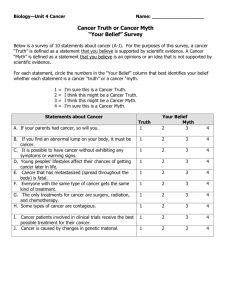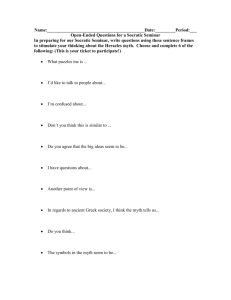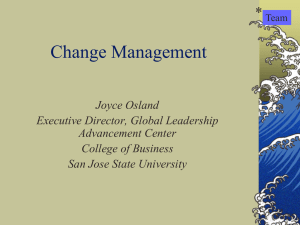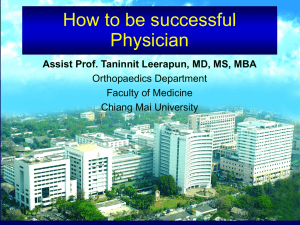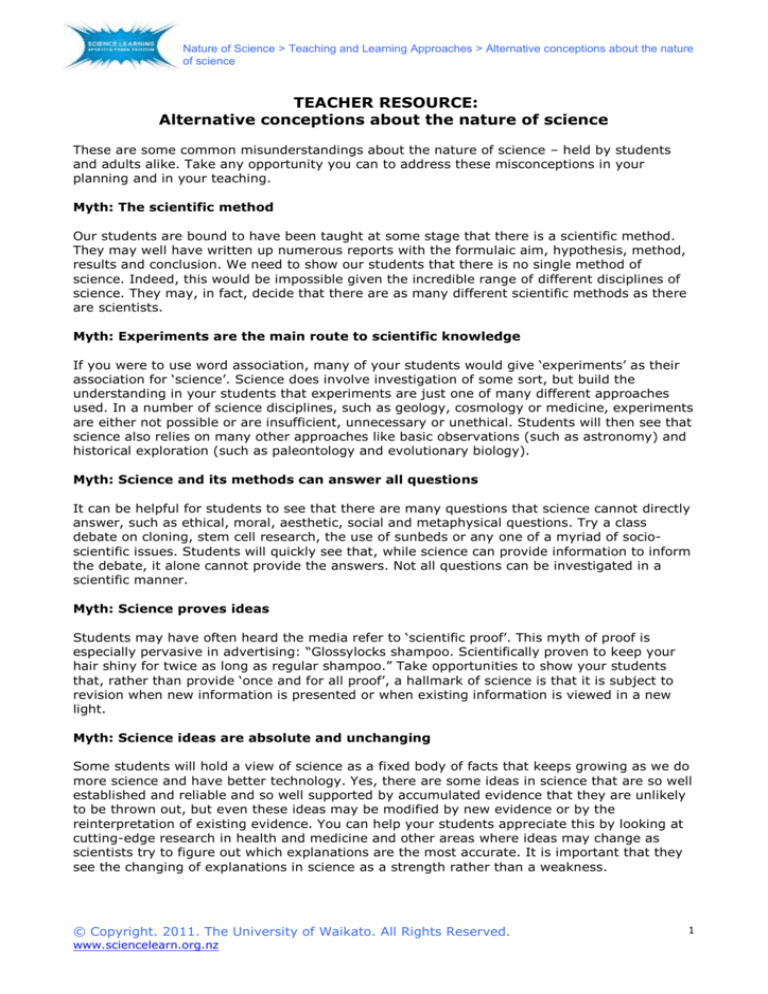
Nature of Science > Teaching and Learning Approaches > Alternative conceptions about the nature
of science
TEACHER RESOURCE:
Alternative conceptions about the nature of science
These are some common misunderstandings about the nature of science – held by students
and adults alike. Take any opportunity you can to address these misconceptions in your
planning and in your teaching.
Myth: The scientific method
Our students are bound to have been taught at some stage that there is a scientific method.
They may well have written up numerous reports with the formulaic aim, hypothesis, method,
results and conclusion. We need to show our students that there is no single method of
science. Indeed, this would be impossible given the incredible range of different disciplines of
science. They may, in fact, decide that there are as many different scientific methods as there
are scientists.
Myth: Experiments are the main route to scientific knowledge
If you were to use word association, many of your students would give ‘experiments’ as their
association for ‘science’. Science does involve investigation of some sort, but build the
understanding in your students that experiments are just one of many different approaches
used. In a number of science disciplines, such as geology, cosmology or medicine, experiments
are either not possible or are insufficient, unnecessary or unethical. Students will then see that
science also relies on many other approaches like basic observations (such as astronomy) and
historical exploration (such as paleontology and evolutionary biology).
Myth: Science and its methods can answer all questions
It can be helpful for students to see that there are many questions that science cannot directly
answer, such as ethical, moral, aesthetic, social and metaphysical questions. Try a class
debate on cloning, stem cell research, the use of sunbeds or any one of a myriad of socioscientific issues. Students will quickly see that, while science can provide information to inform
the debate, it alone cannot provide the answers. Not all questions can be investigated in a
scientific manner.
Myth: Science proves ideas
Students may have often heard the media refer to ‘scientific proof’. This myth of proof is
especially pervasive in advertising: “Glossylocks shampoo. Scientifically proven to keep your
hair shiny for twice as long as regular shampoo.” Take opportunities to show your students
that, rather than provide ‘once and for all proof’, a hallmark of science is that it is subject to
revision when new information is presented or when existing information is viewed in a new
light.
Myth: Science ideas are absolute and unchanging
Some students will hold a view of science as a fixed body of facts that keeps growing as we do
more science and have better technology. Yes, there are some ideas in science that are so well
established and reliable and so well supported by accumulated evidence that they are unlikely
to be thrown out, but even these ideas may be modified by new evidence or by the
reinterpretation of existing evidence. You can help your students appreciate this by looking at
cutting-edge research in health and medicine and other areas where ideas may change as
scientists try to figure out which explanations are the most accurate. It is important that they
see the changing of explanations in science as a strength rather than a weakness.
© Copyright. 2011. The University of Waikato. All Rights Reserved.
www.sciencelearn.org.nz
1
Nature of Science > Teaching and Learning Approaches > Alternative conceptions about the nature
of science
Myth: Science is a solitary pursuit
Ask a class to draw a scientist at work and you are bound to find an over-representation of
bald (or wild frizzy-haired), bespectacled, white males working alone in a laboratory with test
tubes in hand. This is well researched. You can easily challenge this myth by looking at the
profiles of the scientists on the Science Learning Hub. Few work alone, most work
collaboratively – and they certainly aren’t all male or bald.
Myth: Science is procedural more than creative
If we have a talented artist amongst our students, we are likely to encourage them into some
creative endeavour such as photography, architecture or design. But this creativity is needed
also in all aspects of scientific research, from coming up with a question, creating a research
design, interpreting and making sense of findings or looking at old data in new ways. Remind
your students that Leonardo da Vinci was a brilliant artist and was also a leading scientist in
aeronautics, anatomy, astronomy, botany, cartography, civil engineering, chemistry, geology,
geometry, hydrodynamics, mathematics, mechanical engineering, optics, physics, pyrotechnics
and zoology.
© Copyright. 2011. The University of Waikato. All Rights Reserved.
www.sciencelearn.org.nz
2






